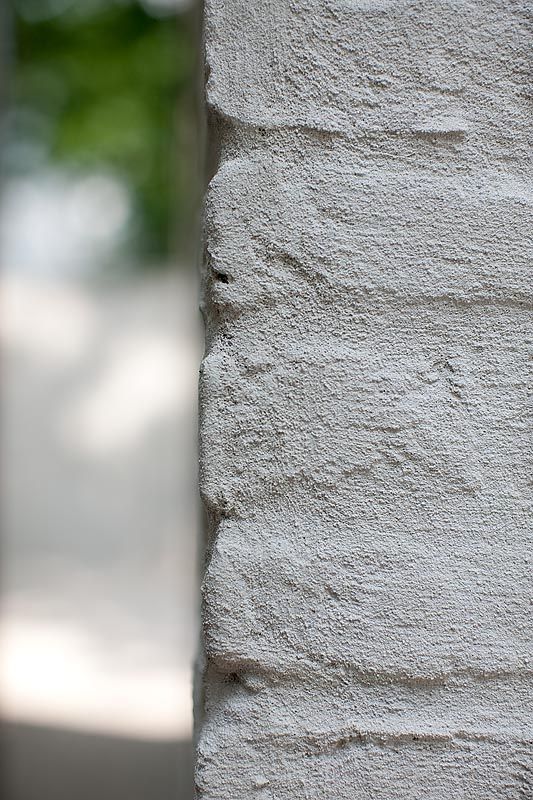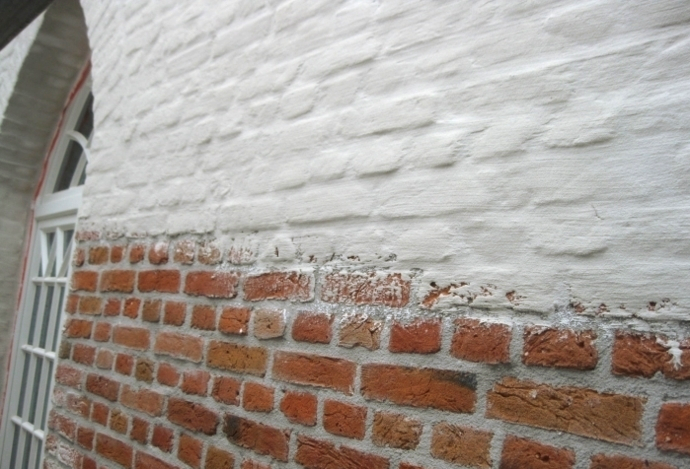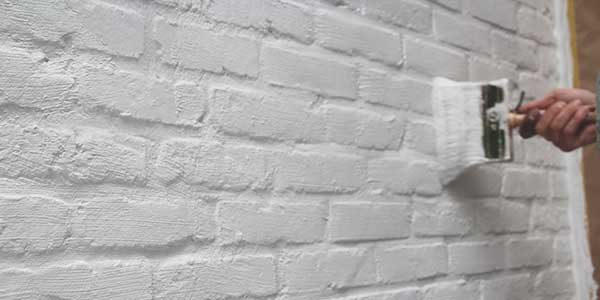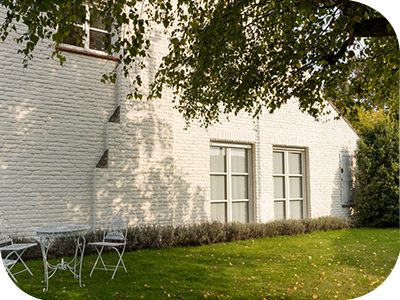Caulking, an ancient painting technique to contemporary standards
 Refreshing and beautifying houses is something of all times. Even our ancestors were already doing this. Only back then, they did not have modern paints and products. Therefore, they used what they had: a mixture of paint and water, sometimes supplemented with other components such as quartz or sand.
Refreshing and beautifying houses is something of all times. Even our ancestors were already doing this. Only back then, they did not have modern paints and products. Therefore, they used what they had: a mixture of paint and water, sometimes supplemented with other components such as quartz or sand.
Over the years, this paint layer became thicker and thicker and acquired a distinctive effect. We like that effect today and many of us yearn for that authentic and nostalgic look of yesteryear, but we want today's façade and wall protection.
This is how kaleien was born, not a product, but an old painting technique. This involves thinly plastering porous substrates with hydraulic lime using a brush or pap brush. We are talking about a cement-free hydraulic lime plaster here. (No paint...)
With a layer of hydraulic lime plaster you can very quickly imitate the effect of the historical whitewashing of walls. This was done mainly where walls were affected by salts, such as on farms, and for hygienic reasons. Because air lime was used during the historical liming, which was not bound, it had to be renewed regularly. As a result, over the years, layer upon layer of lime was used to obtain the effect we know today as the "kalei effect": nuanced in colour and with a brushstroke structure.
This widely used technique in façade renovation is a perfect way to restore aged and damaged façades and make them beautiful again. Typically, the underlayment remains visible but is obscured. Thus, you can still see bricks, joints and other elements, but they are covered and beautified. Today's caulked facades are protected against all weather conditions.
 This method is used for facades, interior walls, renovations and new construction projects. renovations sometimes use different bricks, thanks to a caulking system you can give your facade back a uniform look. By liming, you give the façade of your home a different outer shell and hide flaws or imperfections, it gives your façade or interior wall a unique and new look. The lime provides a good protective layer against moisture and other influences. Lime is vapour-permeable, which is extremely important to avoid moisture problems. On top of that, lime is an environmentally-friendly and sustainable method.
This method is used for facades, interior walls, renovations and new construction projects. renovations sometimes use different bricks, thanks to a caulking system you can give your facade back a uniform look. By liming, you give the façade of your home a different outer shell and hide flaws or imperfections, it gives your façade or interior wall a unique and new look. The lime provides a good protective layer against moisture and other influences. Lime is vapour-permeable, which is extremely important to avoid moisture problems. On top of that, lime is an environmentally-friendly and sustainable method.

The lime layer buffers rainfall and has the property of actively drying out again very quickly. This explains the typical cloudy effect on a freshly sprinkled limed wall.
White is undoubtedly the most commonly used colour. Nevertheless, they are available in other colours, including earth tones such as brown and grey. By adding colour pigment, caulking can be done in different colours. When choosing the colour, keep in mind possible colour differences. Caulking is a natural product. Colour differences can occur depending on the humidity of the substrate.
If you choose a dark colour, also keep in mind that white rashes such as saltpeter may shine through it. You can help determine the appearance of the kaleisel itself by choosing a certain thickness of the applied layer and the quantity of sand grains.
After a longer period, it is possible that the façade may discolour a little, mainly due to the various outside influences. This is not immediately viewed as a disadvantage but as part of caulking.
The final appearance depends not only on the colour but also on the finishing technique used. The typical brush marks add character to your facade.
It is possible to polish the caulking layer with a dry brush or a sponge. This can create different effects such as a sandy appearance, view with more stripes or another special look. The balay layer can also be influenced by using different compositions and layer thicknesses.
The preparation of the wall is crucial. All loose parts should be removed. Old paint parts should also be removed first. Take care when chalking old farmhouses. The bricks often contain a lot of salts, which can cause white crystals and lead to poor adhesion of the whitewash.
 Kalei is often used to finish old facade bricks in a vapour-proof manner, but can just as easily be applied to new brickwork or on concrete. Even an old garden wall gets a whole new fresh look in no time with kalei. Caulking creates a natural, mineral, matt effect that highlights brickwork beautifully.
Kalei is often used to finish old facade bricks in a vapour-proof manner, but can just as easily be applied to new brickwork or on concrete. Even an old garden wall gets a whole new fresh look in no time with kalei. Caulking creates a natural, mineral, matt effect that highlights brickwork beautifully.
Old kaleil layers can serve as a substrate for a new layer if they are first stripped off and brushed. Then you also need to remove moss and algae, and we also install a greenstop. Bad joints are repointed first, damaged stones are removed and replaced.
Caulking requires little maintenance. Spraying off the façade with a gentle jet of water is sufficient for a caulked exterior wall.
If you want to merge the original chalk structure with an even colour that no longer darkens in damp weather or rainfall, Bomuur is the right address. After caulking, we always apply a silane hybrid paint. This is water-repellent and self-cleaning and will not disturb the matt appearance of the caulking.

Step 1 of the 10-step plan: Request a no-obligation quote.
We will contact you as soon as possible and arrange the next 9 steps.